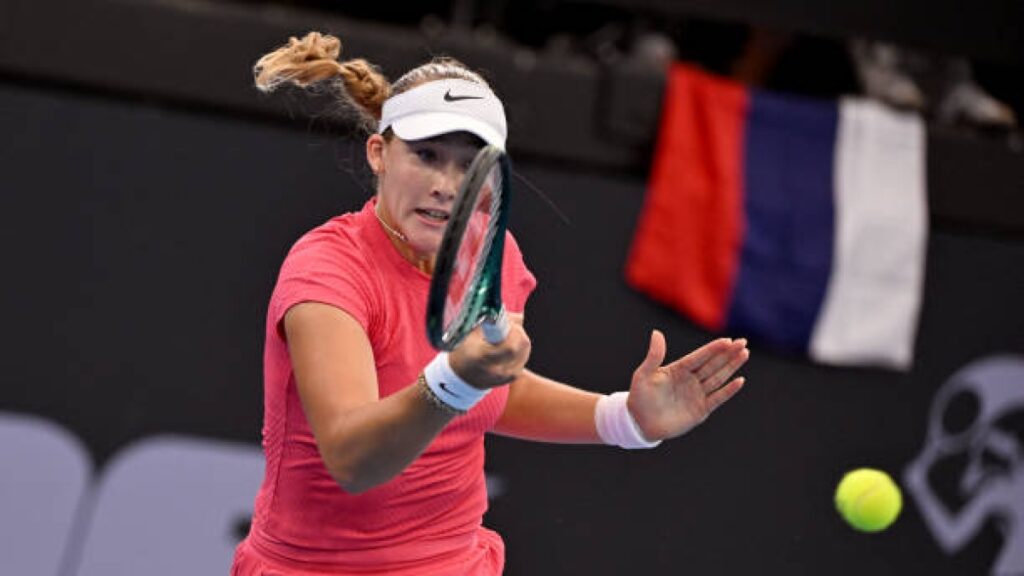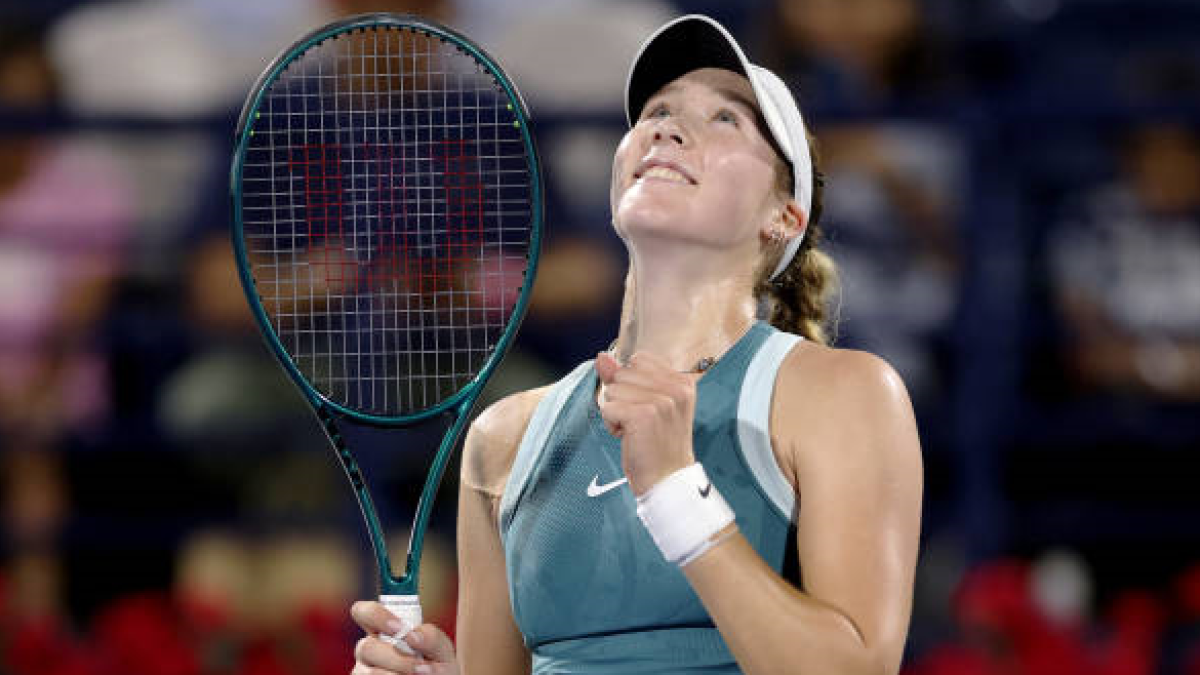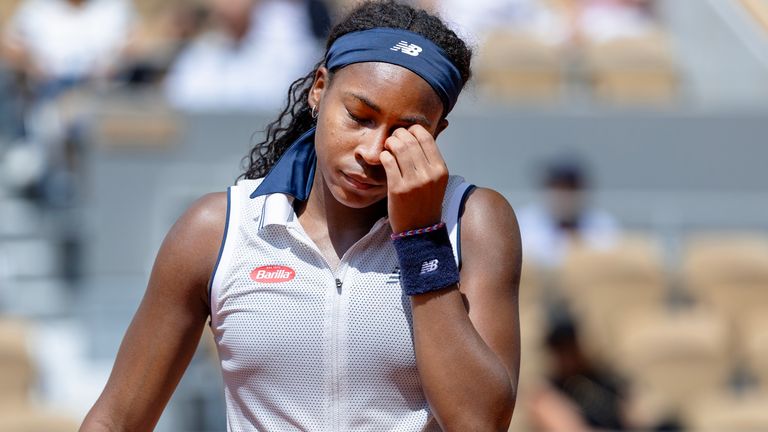In the world of professional tennis, where fierce competition and unrelenting pressure are constants, the journey of young stars is often filled with both triumphs and struggles. Mirra Andreeva, one of the most talked-about young talents on the WTA circuit, is no exception. At just 16 years old, she has already made waves, leaving fans and experts alike wondering how much further she can go. Yet, despite the high expectations surrounding her, Andreeva’s journey has not been without its challenges. In a candid interview, she recently opened up about the pressures of being a prodigy in the sport and her honest desire to achieve everything faster.
The Weight of Expectations
Mirra Andreeva’s rise to prominence has been nothing short of remarkable. In a short time, she has already accumulated impressive results, including her recent performance at the Madrid Open, where she showed the world that she is not just a flash in the pan. Her fluid style of play, combined with a mature mental game, has caught the attention of both tennis aficionados and casual fans alike.
But with all the accolades and recognition come high expectations. As Andreeva has continued to ascend the rankings, the world of tennis has looked at her with increasingly eager eyes, hoping for rapid results. Many young players, especially those in Andreeva’s position, face immense pressure to deliver on their promise.
In an industry that thrives on speed—whether it’s winning titles or breaking records—the expectation to achieve greatness quickly can be overwhelming. Andreeva herself acknowledged this, saying, “Of course, I want everything to happen faster.” This simple statement encapsulates the internal conflict many athletes face: the drive for success, mixed with the reality of a journey that takes time.

The Reality of Progress
While Andreeva’s desire to fast-track her success is relatable, it also highlights the often overlooked side of being a young tennis prodigy. It’s easy for the public and the media to get caught up in the whirlwind of young talent. The anticipation of another breakthrough moment, another victory that cements her place in the tennis world, is exciting. However, for Andreeva, the journey is not as immediate as many might expect.
As a teenager in the most competitive sports environment, her path to success is filled with obstacles—mental, physical, and emotional. Tennis is a game that demands not only physical prowess but also psychological resilience. Players at Andreeva’s level are not just facing opponents on the court but also battling against the pressure of expectations, the weight of their own ambition, and the challenges of self-doubt that can arise when success does not come as quickly as hoped.
Andreeva’s willingness to acknowledge the internal push to do things faster is a testament to her self-awareness. She understands that growth in tennis is a marathon, not a sprint, and that each setback or slow phase of progress is part of the greater journey. However, her honesty reflects a natural urge to speed up the process, to move from one achievement to another with ease. It’s a sentiment that many athletes feel, especially those who are constantly in the limelight and subjected to public scrutiny.
The Pressure of Young Success
The life of a young tennis player is undeniably intense. There is no off-season, no moment where they can simply rest and enjoy the benefits of their hard work. Andreeva, like many young athletes, is thrust into the global spotlight with every win and loss. Each match is an opportunity to prove herself, and as her career progresses, the stakes get higher.
But with that fame comes its own set of pressures. Andreeva has been compared to some of the greats of the game, with commentators often referencing her ability to play with the skill and composure of a player much older than she is. In the eyes of fans and pundits, she is a future champion, and that future is expected to arrive soon.
However, this pressure can often lead to burnout or a sense of frustration when success doesn’t come as rapidly as anticipated. Andreeva’s desire for everything to happen faster speaks to the urgency many young players feel to live up to the hype. It’s a reminder that, while they are incredibly talented, they are also still learning, growing, and adjusting to the demands of professional tennis.
The Balance Between Ambition and Patience
One of the most fascinating aspects of Andreeva’s reflections is her ability to balance ambition with patience. While her honest desire for a quicker rise to the top is understandable, her mature recognition that success takes time reflects a deeper understanding of her own development as a player.
Tennis is a demanding sport, and the pressure to perform can lead players to question whether they are progressing fast enough. But with patience, they learn to trust the process, understanding that each match and each tournament is a stepping stone toward long-term success. Andreeva’s journey is a reminder that no player reaches their peak overnight. Even the greatest tennis players of all time—Serena Williams, Venus Williams, and Steffi Graf—spent years honing their craft before achieving the pinnacle of success.
Andreeva’s honesty also speaks to her resilience. In her candid statement, she acknowledges the tension between her ambition and the reality of the sport. The desire for rapid success is natural, especially when you’re playing at such a high level. However, understanding that the journey is just as important as the destination allows her to focus on continuous improvement rather than an immediate end goal.
A Bright Future Ahead
Mirra Andreeva’s reflections are not just a sign of the internal struggles she faces as a rising tennis star—they also serve as a beacon of hope for others who might feel overwhelmed by their own expectations. Her openness about wanting faster results is something that resonates with anyone who has ever felt the pressure to succeed quickly.
But more importantly, Andreeva’s journey proves that success is a process. It’s about learning from each experience, growing from each setback, and staying focused on long-term goals. Andreeva may want everything to happen faster, but the maturity and insight she’s already shown at such a young age make it clear that she has the right mindset to navigate the challenges ahead.
As she continues to develop her game and work toward her goals, it’s clear that Andreeva’s journey will be one worth following. She has the talent, the drive, and the awareness to succeed at the highest level—and the world is waiting to see just how far she will go.

Conclusion: The Power of Honesty and Self-Reflection
Mirra Andreeva’s candid reflection on her expectations is more than just a statement of impatience—it’s an acknowledgment of the human side of professional tennis. Behind the powerful serves and graceful movements lies a young woman who, like many others, is working through the complexities of ambition, pressure, and growth.
Her honesty in expressing her desire to achieve success more quickly is a reminder that even the most promising athletes face the same internal struggles as anyone else. In the fast-paced world of professional sports, it’s easy to forget that athletes are not just machines—they are individuals with emotions, hopes, and dreams. Andreeva’s willingness to open up about her journey invites her fans to connect with her on a deeper level, not just as a tennis player, but as a person navigating the highs and lows of life on tour.
As Andreeva continues to evolve, one thing is certain: her honest approach to both her ambitions and the realities of the sport will keep her grounded and on the path to success. For fans, it’s not just her performance on the court that is captivating—it’s her unwavering determination to grow, learn, and stay true to herself.
The best may be yet to come, but one thing is clear: Andreeva’s journey will be an inspiration for years to come, and we’ll all be eager to see how she continues to write her story.


